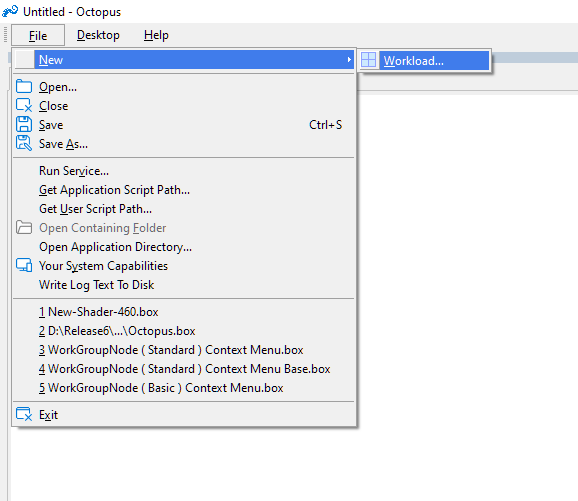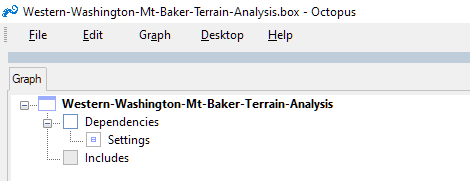The application displays script compiler messages in the output window:
Start loading scripts
Done loading scripts; 10 loaded in 1.29 ms; avg 0.09
If there are any script compiler errors, undo your changes in the text editor, go back to the previous step, and follow the instructions again. Here is an example of what error messages might look like:
Start loading scripts
D:\release6\scripts\app_shell_util.ssl(1770) : error: newline in constant
Done loading scripts; 10 loaded in 1.29 ms; avg 0.09
A popup menu appears. You should see the following:

The command uses the new name and icon, so the user interface work is complete. Now it's time to make the command do some work so that we can work in true octopus style.

